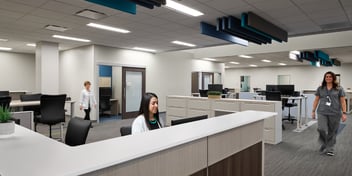
 Many healthcare patients today spend lots of their time in hospital buildings. Which isn't great for quality of life, but are there steps we can take architecturally to improve their situation? In the wise words of Winston Churchill, "We shape our buildings and afterward our buildings shape us." The fact is that a patient’s comfort, mood, and quality of life can fluctuate dramatically depending on the atmosphere of the facility they occupy. While it can be easy to discount or even ignore completely the effect that architecture has on our day-to-day lives, we shouldn't. Nearly every moment of every day is influenced by architecture. So if we want to have happier patients and staff, it seems reasonable that we pay a bit more attention to the design of our healthcare facilities.
Many healthcare patients today spend lots of their time in hospital buildings. Which isn't great for quality of life, but are there steps we can take architecturally to improve their situation? In the wise words of Winston Churchill, "We shape our buildings and afterward our buildings shape us." The fact is that a patient’s comfort, mood, and quality of life can fluctuate dramatically depending on the atmosphere of the facility they occupy. While it can be easy to discount or even ignore completely the effect that architecture has on our day-to-day lives, we shouldn't. Nearly every moment of every day is influenced by architecture. So if we want to have happier patients and staff, it seems reasonable that we pay a bit more attention to the design of our healthcare facilities.


